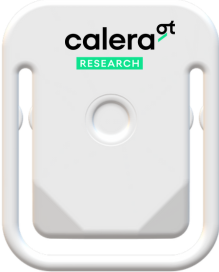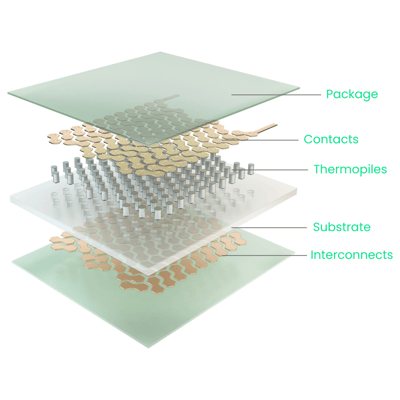Heat Flux Sensor Technology
How our unique heat-flux sensors deliver research-grade data for your studies

How does it work?
Calera: Continuous and Non-invasive Core Body Temperature Monitoring
Calera® is a wearable device by greenteg, which enables accurate, non-invasive, and continuous core body temperature monitoring. The technology utilizes innovative thermal energy transfer (heat flux) sensors that operate independently of physical activity and environmental conditions.
Heat-Flux Technology: Unlike traditional methods, Calera combines heat-flux and skin temperature sensors with machine learning algorithms trained on 1M+ data points to calculate core body temperature.
What is heat flux?
Heat Flux is the rate of heat energy that passes through a surface. Depending on its exact definition, its unit can be expressed as either W/mgt or W. Temperature gradient in a given environment results in the creation of a heat that flows from the hot to the cold side of the given system. The thermal transfer coefficient of the given system is also important. Heat flux can be estimated with two different methods:
- Directly with Heat Flux Sensors
- Indirectly using Temperature Sensors.
A Heat Flux Sensor is a Seebeck sensor: When heat passes through the sensor, the sensor generates a voltage signal. This voltage signal is proportional to the heat passing through the sensor. Thus, they can be used for many industrial or research applications implying a temperature gradient throughout a surface.


How does it work?
Our Heat Flux Sensor is a highly sensitive Seebeck Sensor.
The sensitivity of a Seebeck Sensor depends on the thermocouple material quality used in the sensor and the number of thermocouples used.
A thermocouple consists of two separate thermopiles (n-type and p-type). These thermopiles are highly integrated in the sensor substrate, which leads to high sensitivity sensor modules.
